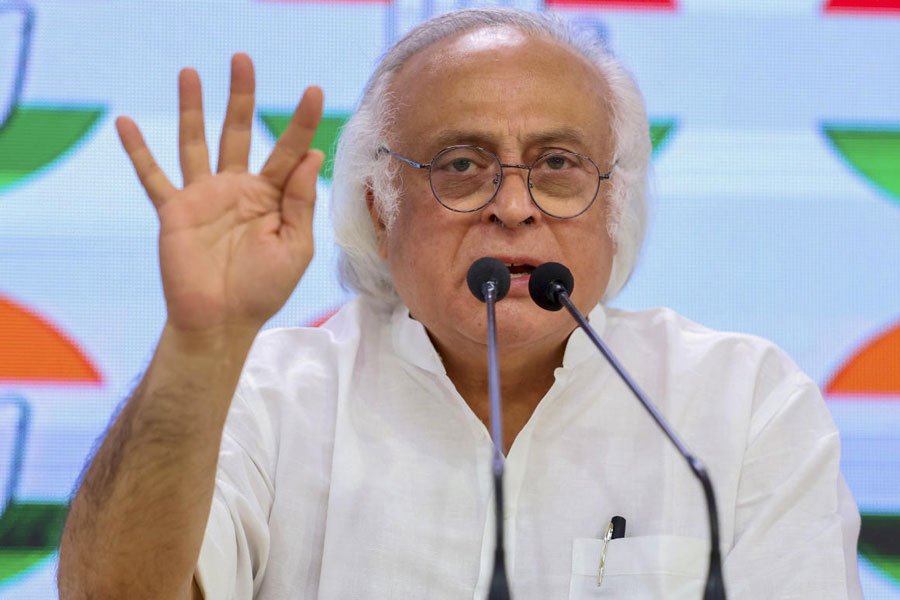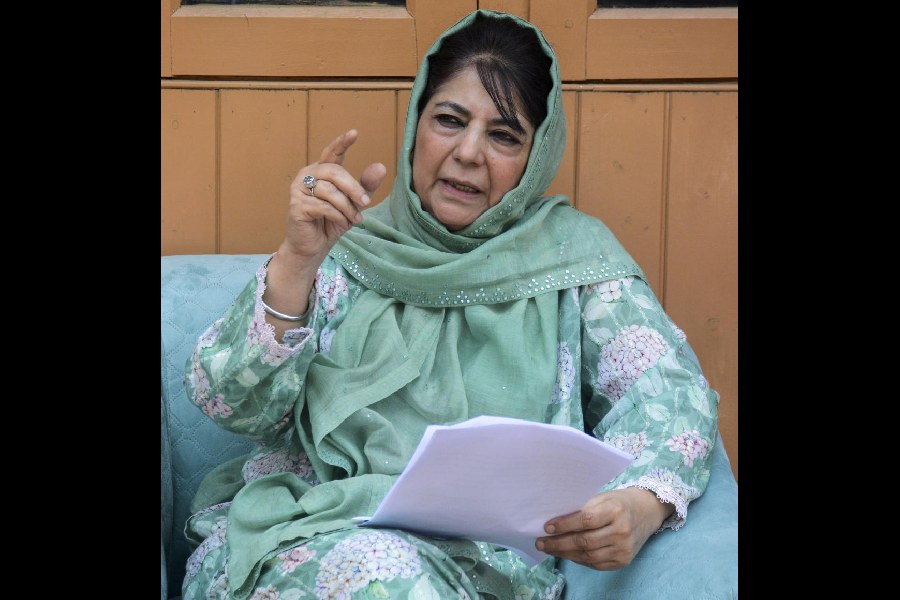 |
| Kareena Kapoor |
 |
| Shilpa Shetty |
Every time Riya Sanyal looked into the mirror, she knew she had to lose weight. For two years, the Shri Shikshayatan College student survived on just vegetables and chapatti. Today she weighs 9kg less. The problem is, Riya, at 5ft, was just 52kg to begin with.
Across town, 20-year-old Priyanka Basak skips lunch on weekdays and has only boiled vegetables and milk for dinner. If she is hungry during the day, she drinks water. If she eats beyond her self-imposed diet, she gets so tense that she can’t fall asleep at night.
Riya and Priyanka are among a growing number of GenX girls adopting extreme measures to lose weight or stay thin. The way to be is the waif-like size zero, once the preserve of western glamour icons like Kate Moss and Victoria Beckham, but which Bollywood belles have come to embrace.
The thin-is-in trend figures high on the list of what parents of teenagers worry most about, it emerged at a workshop for parents with teenage kids at The Conclave recently.
“Earlier, top heroines like Vyjayanthimala, Madhubala and Mumtaz had a healthy build. But today’s super-thin actresses like Kareena Kapoor and Shilpa Shetty influence impressionable young minds to aspire to a figure like theirs,” said psychologist Salony Priya at the workshop organised by Pinki Bhaia and Moulishree Dhoot of Simply Project Consultants.
“We decided to hold this workshop as parenting a teenager is one of the big challenges of modern living.… It became evident from the interaction that the growing obsession with size zero among girls is giving parents sleepless nights. This is a problem that needs to be addressed by parents, children, teachers and counsellors,” said Bhaia.
Size zero, initially a clothing size in the US, is now a fixation among urban Indian girls. And according to Priya, the number of such misled youngsters has been on the rise for the last two years.
“Parents must try to interact with their teenaged children as friends rather than as elders. Thanks to the television and internet, teens are exposed to violence and the glamour world too soon. Parents must be the reality check,” said Priya.
Seventy-five parents attended the workshop, of whom 10 were fathers.
Said Richa Nevatia, one of the participants: “Priya’s suggestions, especially her advice to look out for signs like withdrawal to understand if a child is troubled, were very helpful.”
“Most girls today, even those with a normal body weight and height ratio, feel that if they are not thin, they can’t look good,” said Malini Bhagat, the principle of Mahadevi Birla Girls’ Higher Secondary School.
Surviving on meagre diets, chewing gum and black coffee are some of the “tricks” the girls employ to beat hunger pangs. “We have seen students as young as 13 skipping lunch, throwing away a part of the tiffin or substituting meals with junk food like bhujia,” said Bhagat.
In extreme cases, they starve themselves. Priya recalls a student who once fainted during morning assembly at school. “We eventually found out that she had not eaten for three days.”
The trend is most visible among adolescents. The goal is to look “attractive” and to “fit in”. More and more girls from elite city schools are also aspiring to be models, pointed out Priya.
“My classmates used to make fun of my appearance, which made me feel unattractive. I thought that if I became thinner, I would become popular,” says Priyanka, a student of zoology honours.
Priya blames the “explosion” of images of thin celebrities in the media for fostering an unhealthy body image. This includes a warped perception of what constitutes a healthy diet.
Akriti Tulsian, a counsellor attached to Mahadevi Birla, feels that parents have contributed to this unhealthy trend too. “Students tell me that their parents are always short on time and do not concern themselves with what their kids eat. In the absence of support from the family, the teens fall back on screen idols or their peer group,” she says.
Some parents, like Priyanka’s mother, support the “watch-what-you-eat” trend. “Everyone in our family is on the heavier side. Priyanka has overcome that problem. Also, her current eating habits are an improvement on her crash diet,” she says.
Skipping meals or eating less than the normal requirement does not really help in losing weight, warns nutritionist and t2 columnist Hena Nafis. “These practices lead to loss of muscle rather than burning fat. When such people begin eating normally again, they regain weight rapidly,” she says.
Mitrasree Dasgupta, a gynaecologist at Woodlands Hospital, says that extreme dieting can affect vital organs. “It can cause abnormal liver function, gall bladder stones, irregular menstrual cycles, dry, patchy skin and urosepsis, a form of kidney inflammation that can even turn fatal.”
Priyanka would know. Her crash diet led to gynaecological problems when she was in school. Her doctor said the lack of nutrition affected her height too.
Other teenage problems
• Peer pressure
• Depression and withdrawal
• Heightened anxiety for academic excellence
• Low self-esteem
• Communication gap with parents
• Fear of failure
• Isolation
(Some names have been changed on request)
What do you feel is the biggest challenge of parenting a teen? Tell ttmetro@abpmail.com










